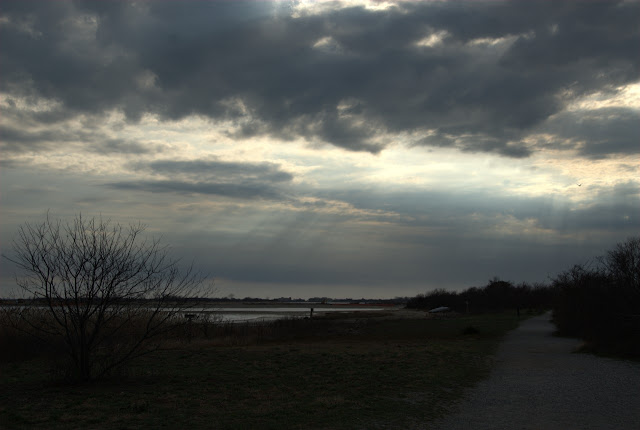And therein was the rub. When I purchased the camera last December,
Adobe Camera Raw had just added support for the Fuji RAW file
format used in this camera. But unlike NEF – Nikon’s format – I could no longer
view thumbnails in Windows Explorer. There was no CODEC available. A CODEC is a software program that "codes/decodes" image and video files - compresses them to store on a drive then decompresses then to view. Without an appropriate CODEC, Windows cannot dislpay thumbnails or open the files in any of the Windows image viewing utilities.
I like
to view thumbnails in Explorer, and sometimes use software other than Photoshop,
using a right click and “open with” to
edit images. In my search for a folder-style, Windows Explorer-like quick and
easy file viewer I stumbled upon the FastStone Image Viewer. This tight little
application offers a veritable cornucopia of useful features that I think many of
you will be able to make use of, and it can display RAF files – and just about
any other graphic image format I can throw at it.
 |
| FastStone Image Viewer Main Screen |
I have incorporated it into my workflow, using it to view and cull bad images after importing the contents of my memory card to my computer. It has a very convenient folder/thumbnail/preview screen that resembles Windows Explorer and lets you find things very quickly using the thumbnail view, or in the folder list.
A
single click on the preview will show you a magnified view in the preview.
With
a double click on the preview you can see a full screen image,
then another click
brings you to a 100% view of the image.
As you can see, it can quickly display four different image magifications about as fast as your finger can click the mouse buttons.
Panning and zooming is instant – you
only need to left click and drag. The application loads quickly and has an
extremely intuitive interface with extensive use of the right click on an image
to access key features, making it a very snappy application.
FastStone Image Viewer can read most raw file formats - CRW, CR2,
NEF, PEF, RAF, MRW, ORF, SRF, ARW, SR2, RW2 and DNG, as well as graphic file
formats – JPEG, BMP, GIF, PNG, TIFF, PCX, TGA JPG2000, PSD, EPS, WMF, CUR, ICO.
It can take any of the above formats and convert them to JPEG, BMP, GIF, TIFF
PCX, TGA, JPEG2000 and PDF.
Image manipulation tools include lossless rotation/flip,
resize/resample, crop, sharpen/blur, adjust lighting/curves/levels/colors,red
eye removal, clone stamp, healing brush, etc.
FastStone offers powerful batch processing for renaming, resizing
and image format conversion. When resizing for web, the algorithms are so good
that it is almost impossible to tell between the low and high res image at screen
resolution.
 |
| Right Click on Image Flyout Menu |
Right clicking on an image reveals a flyout menu that allows you
to launch the image editor(s) of your choice, view a full screen image, start a
slide show, open the containing folder, delete/copy/move/email/print the image,
create a new folder and view file properties.
 |
| Tool Flyout Menu |
The Tools selection has its own
flyout that allows you to access batch convert/rename, change timestamp, jpg
lossless rotate, remove jpg metadata, compare images and create a wallpaper
image.
The main menu offers a number of timesaving features – image
capture from scanner, screen capture, image import, create/edit a slide show or
contact sheet, view histogram and file properties, configure and launch the
image magnifier, tag images, and a range of useful quick editing tools. You can
also annotate and add special effects/watermark/border/frame mask.
This application has become an integral part of my workflow – from
importing images from my memory cards, to resizing images for posting on
Facebook or on my website. The best part is that is costs nothing for
non-commercial use.
EXIFTool by Phil Harvey is another application that serves a unique function that I have come to rely
on. When I need to see details about an image,
ExifTool offers the complete list, and serves it up quickly. All the particulars of the
camera and lens combination that was used to record the image, the metadata,
can be viewed for every image that has it attached. It can read, write and edit the metadata, including almost
all image tags found in EXIF, GPS, IPTC, XMP, JFIF, MakerNotes, GeoTIFF, ICC
Profile, Photoshop IRB, FlashPix, AFCP, ID3 and others from a wide variety of
image formats. Data can be output in various formats. You can fix timestamps,
rename files, extract saved thumbnails, previews and large JPEGs from RAW
files. It has many, many more features that you can read about on Phil Harvey’s
site.
For those who are comfortable with DOS-level command line
operation, the basic EXE file might be all you need. You can download it here.
Instructions for opening and installing the Windows executable file can be
found here. For those of you who prefer a more familiar
graphic interface and are using Windows 7, the author has provided a Windows-friendly
shell that offers a few more bells and whistles that you can download here.
















































